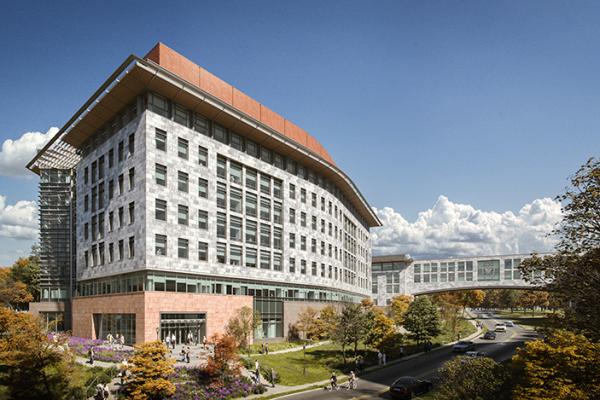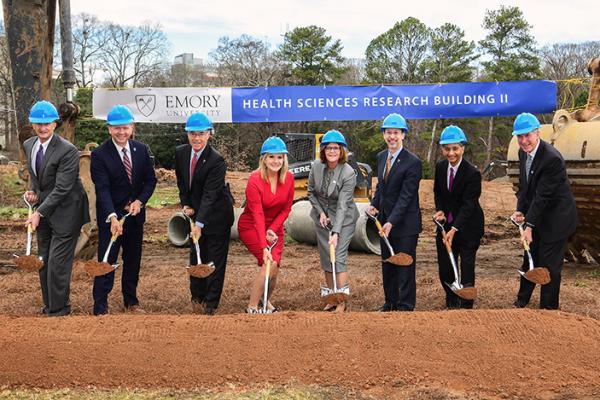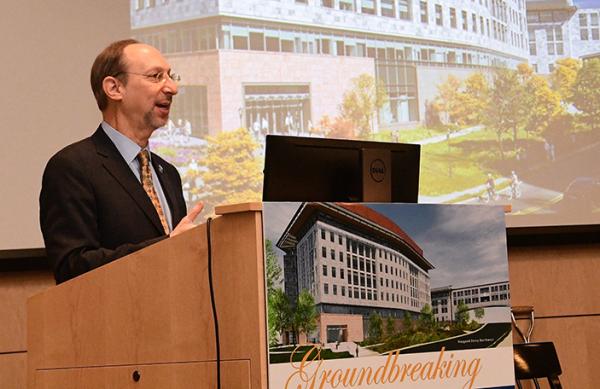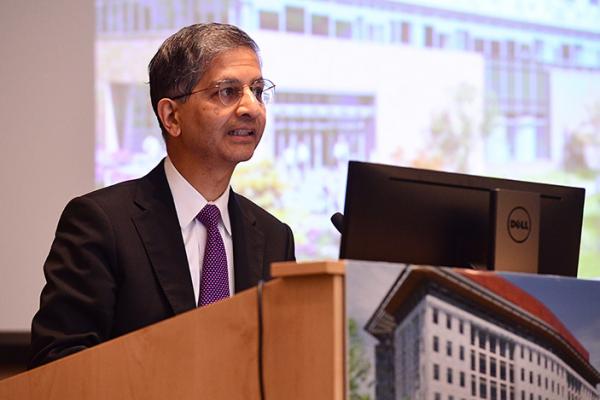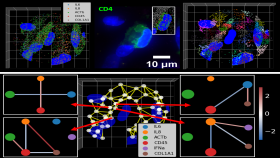Emory University broke ground this week on a state-of-the-art research facility that will focus on innovation, synergy and impact for biomedical research. Biomedical research studies the prevention and treatment of disease and the genetic and environmental factors related to disease in order to find new ways of improving health. The new facility, Health Sciences Research Building II (HSRB II), will be built on Haygood Drive beside its sister facility, Health Sciences Research Building I, which opened in 2013 and houses faculty in the Wallace H. Coulter Department of Biomedical Engineering.
Plans for HSRB II include six stories above ground and two stories below ground, offering more than 346,000 square feet of dedicated research space for imaging sciences, biomedical engineering, cardiovascular medicine, child health including cancer, adult cancer, inflammation, immunity and immunotherapeutics, emerging infections and other cutting-edge interdisciplinary research programs.
The new facility will be funded in part from a generous $400 million gift from the Robert W. Woodruff Foundation, with $200 million of that gift directed for biomedical research. The additional $200 million will help build Emory’s newest cancer facility, Winship at Midtown, which broke ground in November at Emory University Hospital Midtown.
“This new building will help enhance Emory’s mission of advancing collaborative and translational research across many areas throughout the Woodruff Health Sciences Center,” says Jonathan S. Lewin, MD, executive vice president for health affairs at Emory University and president and CEO of Emory Healthcare. “HSRB II will provide a unique setting for researchers to focus on targeted discoveries and developments. We thank the Woodruff Foundation for its gift, helping to make this facility possible.”
Core research functions in the building will include advanced imaging, flow cytometry, a biorepository for storing biological material, genomics and other state-of-the art technologies. The building will include both laboratory and collaborative space for researchers. An innovation zone, including an accelerator space for start-ups and entrepreneurial research, is planned to promote translation of scientific discoveries.
“HSRB II will facilitate our vision of reimagining medicine - providing an innovative and collaborative environment that encourages us to tackle the most challenging problems in biomedical research and human health and providing the best chance of success,” says Vikas P. Sukhatme, MD, ScD, dean of Emory University School of Medicine.
The design for the new building will promote efficiency and sustainability efforts such as: aggressive energy use reduction including occupancy sensors for interior lighting control, automated shades for limiting heat gain and glare control and a solar panel array; a green roof plaza along the side of the building facing Emory’s Lullwater Preserve; a geothermal well field below the surface parking; permeable paving at the surface parking; a rainwater capture system and indoor bicycle storage. The building is targeting LEED Gold Certification upon completion.
“HSRB II is in the vanguard of new biomedical research buildings, such as the Francis Crick Institute in London, creating a remarkable work environment, connectivity and synergy - open labs and workspaces with soft barriers - to facilitate discovery of the biology underlying human health,” says David Stephens, MD, vice president of research for the Woodruff Health Sciences Center.
Construction is slated to begin in January 2020, with a targeted completion date of April 2022. Global design, architecture, engineering and planning firm, HOK is designing the new HSRB II, with JE Dunn Construction building the facility.
Media Contact
Walter Rich
Keywords
Latest BME News
Commercialization program in Coulter BME announces project teams who will receive support to get their research to market.
Courses in the Wallace H. Coulter Department of Biomedical Engineering are being reformatted to incorporate AI and machine learning so students are prepared for a data-driven biotech sector.
Influenced by her mother's journey in engineering, Sriya Surapaneni hopes to inspire other young women in the field.
Coulter BME Professor Earns Tenure, Eyes Future of Innovation in Health and Medicine
The grant will fund the development of cutting-edge technology that could detect colorectal cancer through a simple breath test
The surgical support device landed Coulter BME its 4th consecutive win for the College of Engineering competition.
New research from Georgia Tech helps doctors predict how therapies will interact with a child's immune system, potentially improving outcomes and reducing risks.

